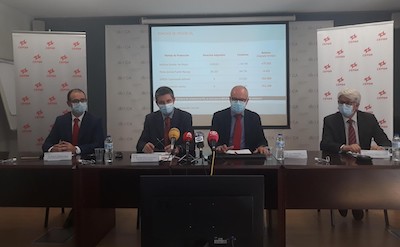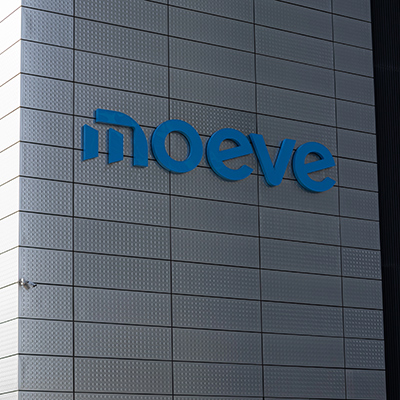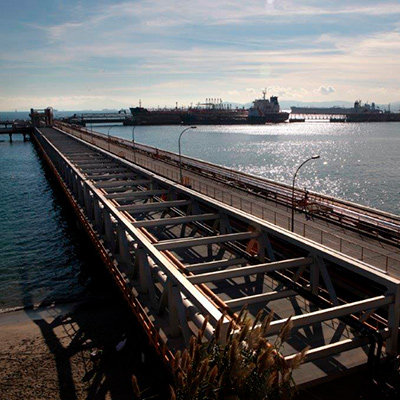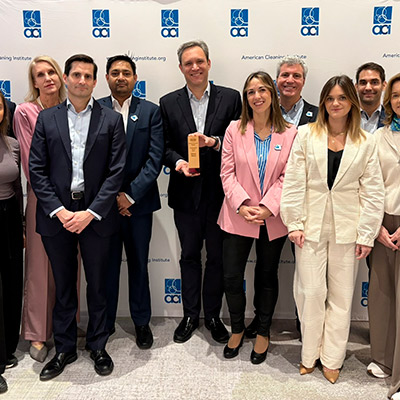- The company reiterates that it has renewed the certification of its environmental management system in accordance with the ISO 14001 standard and the Puertos del Estado Environmental Best Practices Guide.
- These voluntary environmental statements demonstrate Cepsa's commitment to transparency, innovation and taking responsibility for the environment
Both statements (Refinery and Chemical Plant) show that the Gibraltar-San Roque Refinery and the Puente Mayorga Chemical Plant achieved the single certification for the environmental management system in accordance with the ISO 14001 standard, as well as the validation of the EMAS Environmental Statement, to provide the public and other interested parties with information regarding the environmental performance of the industrial center and continuous improvement in environmental matters. In addition, the environmental report for Cepsa's maritime terminal was also verified in compliance with the Puertos del Estado Environmental Best Practices Guide.
The investment of €117 million (since the start of the works) in the new unit's project to manufacture LAB—the raw material used in detergents—with Detal technology should be highlighted as exemplifying sustainability. This project will improve waste management, reduce emissions and increase energy efficiency and security at Puente Mayorga. The project has been recognized by the Spanish Ministry for Ecological Transition with the European Business Awards for the Environment given to the Company.
During the presentation, Gibraltar-San Roque Refinery Director Jose Antonio Agüera highlighted "Cepsa's involvement in environmental protection, a commitment to sustainability and energy efficiency that these environmental statements demonstrate," while Puente Mayorga Chemical Plant Director Jorge Velasco emphasized "the commitment to investment and continuous improvement in the industrial plants of San Roque."
The company, like its Foundation, is committed to the UN Sustainable Development Goals (SDGs), which are part of Cepsa's strategy and its social action in the places where it operates.
Main Results in the Environmental Statements
Atmospheric emissions. For the Gibraltar-San Roque Refinery, the weighted average annual concentrations were this year once again below the limits established by the Integrated Environmental Authorization (AAI), specifically 75% lower in terms of SO2 and 48% lower in terms of NOx. Moreover, mass emissions of SO2 (1,492 metric tons in 2020) reached a record low.
These gradual reductions in SO2 emissions are due to the improvement in the quality of the fuel used in the operations of the unit, which in turn was achieved through the decrease in fuel oil consumption, as well as an increase in gas consumption and the installation of new amine treatment units, meaning that the fuel gas consumed is virtually sulfur free. Particle emissions were 136 metric tons and NOx emissions were 1,035 metric tons.
As the Puente Mayorga Chemical Plant only uses gaseous fuel in production processes, mainly natural gas, SO2 and particle emissions are minimal, remaining below detection limits. NOx emissions remain well below the established limits, with an annual average of less than 300mg/Nm3.
Wastewater. The wastewater from the Puente Mayorga Chemical Plant is treated at the Refinery's treatment plant. The environmental statements indicate that the volume of wastewater at the main discharge point was 24% lower than that permitted, and that the monthly average values were within the permitted limits at all times.
Energy efficiency. At San Roque, Cepsa strives to be more energy efficient in order to make a significant contribution to reducing the environmental impact of its processes, because a reduction in energy consumption automatically implies lower emissions both of greenhouse gases and other gases which have an impact on air quality. Cepsa at San Roque is ISO-50001 certified. The aim of this standard is to promote energy efficiency, reduce greenhouse gas emissions, guarantee compliance with energy legislation, and increase the use of surplus energy.
CO2 emissions. The third period of allocation (2013–2020) of CO2 emission allowances began in 2013, with co-generation facilities ceasing to receive allowances for free. Although the Refinery and Chemical Plant facilities receive free allowances, the allowances allocated gradually drop each year. The Refinery's total emissions balance for 2020 (excluding the co-generation units) amounted to 77,332 metric tons of CO2 allowances below the amount allocated. The Puente Mayorga Chemical Plant released 3,121 metric tons of CO2 allowances above what was allocated.
Other activities. The environmental statements contain detailed information about many other matters ranging from noise and soil monitoring, or water and raw materials usage to reduce their impact when used by consumers. Cepsa’s environmental management is not limited to monitoring the impact of its activities. It also extends to such sensitive issues as the training of its own employees about the environment and also those of the businesses which provide services at the company's facilities or communication with the community.
Through Fundación Cepsa, which was set up in 2016, Cepsa adopts a proactive stance in the defense and improvement of biodiversity in the areas surrounding its production facilities. A good example of this type of activity is the recovery of and improvements to the Madrevieja Environmental Station. With this program, the Fundación Cepsa is providing local people with a space and activities which make them aware of the natural environment of the area. In addition, it should be noted that the Detal project at the Puente Mayorga Chemical Plant has just been recognized with the 25th Environmental Award of the Regional Government of Andalusia in the Circular Economy category.
The company has enabled the e-mail address comunicacion.sanroque@cepsa.com to answer any questions about the environmental statements and their content.




